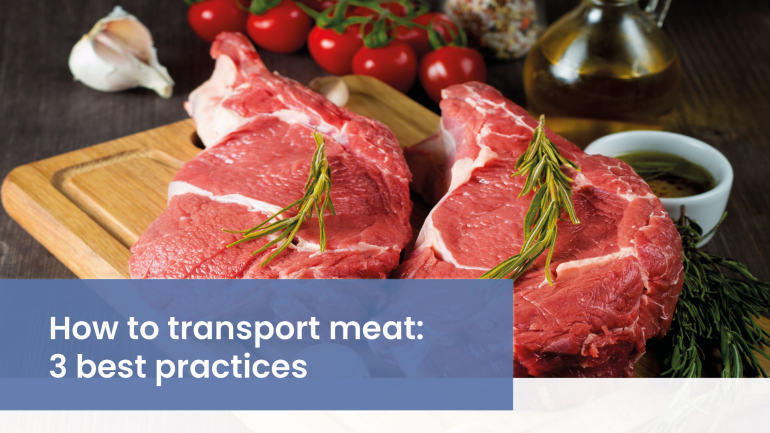How to transport meat: 3 best practices

How to transport meat: 3 best practices
Which products are popular in the supermarket is always influenced by the season. When we look more closely, even daily changes in the weather make a difference in purchasing behaviour. But there is one thing we can almost know for sure: when the sun is shining, it is time to heat the grill. In a lot of different countries all over the world, a barbecue full of meat is a tradition. The demand for meat increases and butchers and manufacturers need to foresee and provide quickly. Sometimes barbecue meat in the supermarket has travelled far. How does meat stay cool when the temperature outside peaks?
Be quick while transporting meat
It might sound a bit obvious, but it is a key component: meat transportation needs to be fast. Fresh meat is prone to spoilage. Bacteria spread easily on freshly butchered meat and bacteria stimulate oxidation. Some meat lasts a few days. So while transporting that nice barbecue steak, the motto is: the sooner the better. However, this is not always possible due to the many steps food preparation and transportation takes. When meat needs to be transported over longer distances, freezing the product is a better solution.
Cooled transportation of meat
There is a condition that always needs to be taken into account when transporting meat: cooling. Whether you decide to freeze or not, meat always needs to be stored at 5 Celcius or colder. In this way, the meat stays as fresh as possible. Besides that, it is also crucial to keep the temperature stable. While transporting your chilled meat products, make sure you log the temperature and monitor this throughout the journey.
High-quality packaging for chilled meat
Another way to keep the temperature of the meat stable is to make sure that the outdoor temperature does not intrude on the packaging and the cold cannot leave the packaging. Otherwise, the temperature of the meat might slowly increase during transportation. Resulting in the meat reaching a temperature above 5 degrees. It is also disastrous for the quality of the meat when the product starts to defrost. Keep the temperature of meat stable using high-quality packaging solutions. Especially when it comes to barbecue meat. This meat is shipped during warm weather and the cargo also experiences many temperature changes. You want to be sure your products are safe and cooled.
How to transport chilled meat
To guarantee a meat product to be fresh and in a good state, the temperature is crucial. We list some packaging solutions that help you ship your meat. Whether in large quantities or for smaller webshops wanting to deliver their meat to customers.
- Insulation boxes. These boxes have an insulating effect meaning the heat will not enter and the cold will not escape. This keeps the air and products inside the box at a stable temperature. A good example of these boxes is EPS boxes. This packaging material is made out of white plastics creating a light-weighted box. Are you looking for a more sustainable option? An EcoCoolBox is just as good as an EPS box.
- Cooling elements. If you are going for conditioned transport, then Ice packs and gel packs are essential. Once the cooling elements are fully frozen, they will cool the cargo or parcel consistently. In the right packaging, they can cool for 48 hours. When combined with insulation boxes, you have your own portable mini freezer.
Are you interested in shipping barbecue meat for your webshop or for bigger transportation? Feel free to contact us for more information or specific advice!


